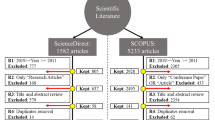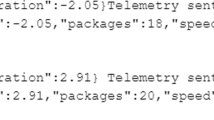Abstract
For flexible manufacturing cells (FMCs), the major control problem is to determine the optimal part routeing and machines dispatching policy. In this research, we present a methodology for generating optimal operating strategies for FMCs. The methodology is built on two techniques: stochastic timed Petri net (STPN) and Markov decision process (MDP). The operating strategy devised with the proposed methodology is deadlock-free and provides the best performance given a set of system parameters (machines, parts, machining times, etc.). Generation of programmable logic controller (PLC) codes is greatly facilitated as the generated strategy can be mapped directly to a ladder diagram representing the PLC code. The objective of real-time optimal control could then be achieved with this type of controller. An example is provided to illustrate the methodology.
Similar content being viewed by others
References
A. Hormann, “Petri net-based control architecture for a multirobot system”,Proceedings of IEEE International Symposium on Intelligent Control, IEEE Service Center, Piscataway, NJ, USA, pp. 493–498, 1989.
H. Garnousset, J-M. Farines and E. Cantu, “Efficient tools for analysis and implementation of manufacturing systems modeled by Petri net with objects: a production rules compilation based approach”,15th Annual Conference of IEEE Industrial Electronics Society, IEEE, Computer Society, Los Alamitos, CA, USA, pp. 543–549, 1989.
M. Jockovic, M. Vukobratovic and Z. Ognjanovic, “Approach to the modeling of the highest control level of flexible manufacturing cell”,Robotica 8, pp. 125–130, 1990.
T. Boucher, M. Jafari and G. Meredith, “Petri net control of an automated manufacturing cell”,Computers and Industrial Engineering 17, (1–4), pp. 459–463, 1989.
A. Camurri and M. Frixione, “Structured representation of FMS integrating SI-nets and high level Petri nets”,Applied Artificial Intelligence,4(2), pp. 109–131, 1990.
S.-H. Teng and J. T. Black, “Petri nets for manufacturing cell control operations”,Manufacturing Review,5(2), pp. 127–136, June 1992.
I. Hatono, N. Katoh, K. Yamagata and H. Tamura, “Modeling of FMS under uncertainty using stochastic Petri nets — an application to rule-based on-line scheduling”,Proceedings of the Third International Workshop on Petri Nets and Performance Models, IEEE Service Center, Piscataway, NJ, USA, pp. 122–129, 1989.
N. Viswanadham and Y. Narahari, “Stochastic Petri net models for performance evaluation of automated manufacturing systems”,Information and Decision Technologies 14(2), pp. 125–142, 1988.
Q. Jin, Y. Sugasawa and K. Seya, “Probabilistic behavior and reliability analysis for a multi-robot system by applying Petri net and Markov renewal process theory”,Microelectronics and Reliability 29(6), pp. 993–1001, 1989.
M. Barad and D. Sipper, “Flexibility in manufacturing systems: definitions and Petri net modelling”,International Journal of Production Research 26(2), pp. 237–248, 1988.
R. Stotts, R. Newcombe and Z. Cai, “Modeling the logical structure of flexible manufacturing systems with Petri nets”,Computer Communications 12(4), pp. 193–203, 1989.
T. M. Tirpak, D. Deligiannis and W. J. Davis, “Real-time scheduling in flexible manufacturing”,Manufacturing Review 5(3), pp. 193–212, September 1992.
G. Balbl, G. Chiola, F. Franceschinis and G. Roet, “Generalized stochastic Petri nets for the performance evaluation of FMS”,IEEE Paper, IEEE Service Center, Piscataway, NJ, USA, CH2413-3/87/1013, 1987.
G. Bruno and M. Aorisio, “Petri net based simulation of manufacturing cells”,IEEE Paper, IEEE Service Center, Piscataway, NJ, USA, CH2413-3/87/1174, 1987.
J. C. Gentina and D. Corbeel, “Coloured adaptive stuctured Petri-net: a tool for the automatic synthesis of hierarchical control of flexible manufacturing systems”,IEEE Paper, IEEE Service Center, Piscataway, NJ, USA, CH2413-3/87/1166, 1987.
M. Kamath and N. Viswanadham, “Applications of Petri net based models in the modeling and analysis of flexible manufacturing systems”,IEEE Paper, IEEE Service Center, Piscataway, NJ, USA, CH2282-2/86/0312, 1986.
H. Tijms,Stochastic Modeling and Analysis: A Computational Approach, John Wiley & Son, New York, USA, 1986.
F. J. Mowle,A Systematic Approach to Digital Logic Design, Addison-Wesley, 1976.
Author information
Authors and Affiliations
Rights and permissions
About this article
Cite this article
Zhou, Q., Wang, M. & Dutta, S.P. Generation of optimal control policy for flexible manufacturing cells: A Petri net approach. Int J Adv Manuf Technol 10, 59–65 (1995). https://doi.org/10.1007/BF01184279
Issue Date:
DOI: https://doi.org/10.1007/BF01184279




